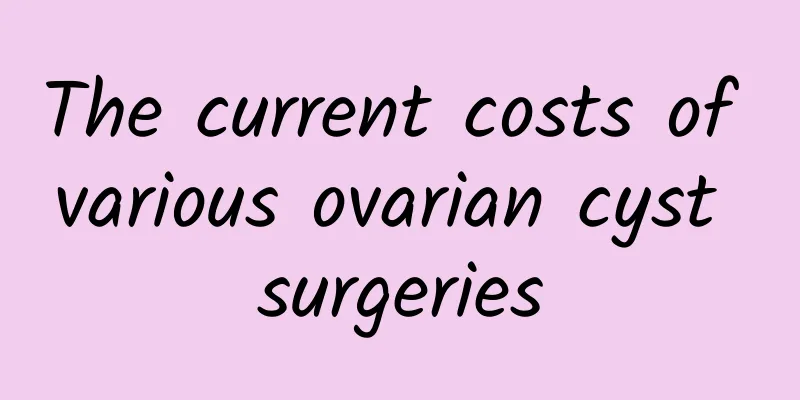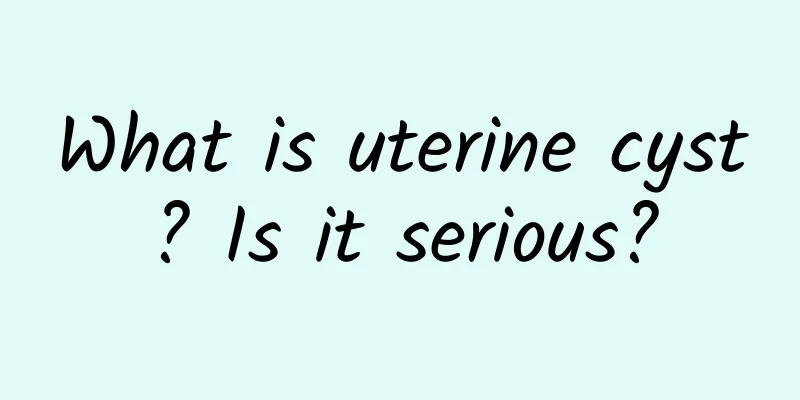Ovarian cysts should be prevented from malignant transformation, rupture or pedicle torsion.

|
If ovarian cysts are not treated promptly, the following complications are likely to occur. 1. Malignant transformation of ovarian cysts Malignant transformation of ovarian cysts generally occurs in older patients, especially postmenopausal women. The cysts can rapidly increase in size in a short period of time, causing patients to feel abdominal distension, loss of appetite, etc. Gynecological examinations show that the cysts are relatively fixed and significantly increased in size, and most of them are accompanied by ascites. Symptomatic treatment should be given in a timely manner. 2. Ovarian cyst pedicle torsion Ovarian cyst pedicle torsion is a gynecological acute abdomen, which often occurs when the body position changes suddenly, in early pregnancy or after delivery. During the examination, it can be found that the cyst is more mobile and the center of gravity is biased to one side. After the cyst pedicle torsions, the venous return of the cyst will be inhibited, resulting in purple-brown congestion and even blood vessel rupture. If the onset of pedicle torsion is acute, the patient will suddenly experience severe pain in the lower abdomen, which may be accompanied by nausea, vomiting, and even shock in severe cases. Due to the tension of the abdominal wall muscles on the affected side, the examination shows that the local tenderness is more obvious and the tension of the mass is greater. 3. Rupture of ovarian cyst Ovarian cyst rupture is mainly caused by ischemic necrosis of the cyst wall or erosion of the cyst wall. It can also be induced by adverse stimulation such as local squeezing or trauma. The patient will experience severe abdominal pain, accompanied by nausea, vomiting, and even shock. During the examination, abdominal irritation signs such as local tenderness and rebound pain are more obvious, and the original mass will shrink or disappear. |
<<: Vulvar leukoplakia needs to be differentiated from various types of dermatitis
>>: Donkey-hide gelatin diet therapy for patients with irregular menstruation
Recommend
Aging causes a decrease in muscle mass, and the onset of aging begins early! Exercise these two parts quickly to fight aging and disease
Have you ever noticed that when you reach a certa...
What is the cause of pelvic effusion and how to treat it
The causes of pelvic effusion are mainly divided ...
How to prevent and treat vulvar leukoplakia
There is still no good explanation for the cause ...
【Video version】Fish oil not only lowers blood lipids but also fights depression! It also helps lower blood sugar
Fish oil is one of the most popular health foods ...
How to diagnose chocolate cysts
The clinical diagnosis of chocolate cyst is the p...
Busy losing weight after the New Year! The secret to weight management: nutrition + exercise
The warm atmosphere of the Spring Festival reunio...
Common causes of bacterial vaginosis
Bacterial vaginosis has a great impact on the pat...
Experts explain two major treatment methods for ectopic pregnancy
Choosing the right treatment method for ectopic p...
What to eat is good for uterine fibroids? Is it good to have sex with uterine fibroids?
What to eat is good for uterine fibroids? This is...
How to Treat Ovarian Cysts
How are ovarian cysts treated? Ovarian cysts can ...
Is the fluid discharge from pelvic inflammatory disease medication normal?
Pelvic inflammatory disease is a very common gyne...
What causes bacterial vaginosis
Many patients have recurring bacterial vaginosis ...
How to treat cervicitis effectively
Cervicitis can be effectively managed with medica...
What to do if your period does not come due to candidal vaginitis
What should I do if my period doesn’t come due to...
Lose weight at the end of the year! The 2 most cost-effective weight loss tips
At the end of the year, it is a time for gift-giv...









